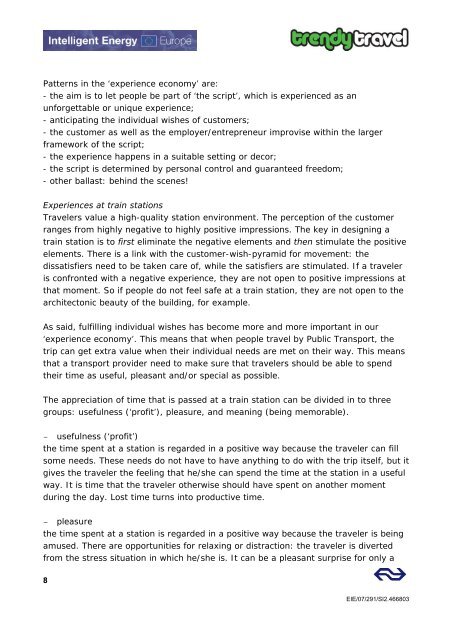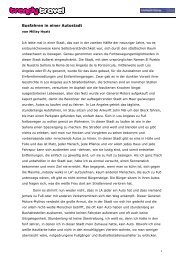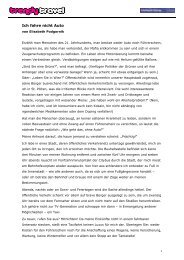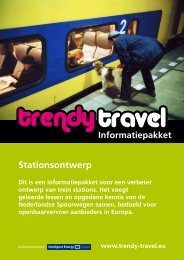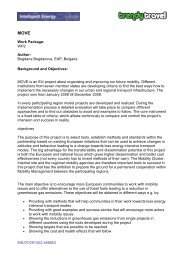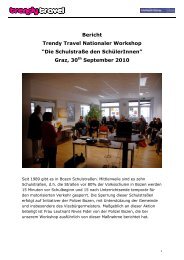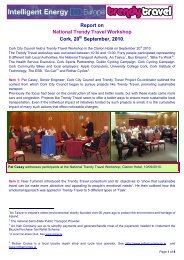Resource Pack: Railway Station Design - Eltis
Resource Pack: Railway Station Design - Eltis
Resource Pack: Railway Station Design - Eltis
You also want an ePaper? Increase the reach of your titles
YUMPU automatically turns print PDFs into web optimized ePapers that Google loves.
Patterns in the ‘experience economy’ are:<br />
- the aim is to let people be part of ‘the script’, which is experienced as an<br />
unforgettable or unique experience;<br />
- anticipating the individual wishes of customers;<br />
- the customer as well as the employer/entrepreneur improvise within the larger<br />
framework of the script;<br />
- the experience happens in a suitable setting or decor;<br />
- the script is determined by personal control and guaranteed freedom;<br />
- other ballast: behind the scenes!<br />
Experiences at train stations<br />
Travelers value a high-quality station environment. The perception of the customer<br />
ranges from highly negative to highly positive impressions. The key in designing a<br />
train station is to first eliminate the negative elements and then stimulate the positive<br />
elements. There is a link with the customer-wish-pyramid for movement: the<br />
dissatisfiers need to be taken care of, while the satisfiers are stimulated. If a traveler<br />
is confronted with a negative experience, they are not open to positive impressions at<br />
that moment. So if people do not feel safe at a train station, they are not open to the<br />
architectonic beauty of the building, for example.<br />
As said, fulfilling individual wishes has become more and more important in our<br />
‘experience economy’. This means that when people travel by Public Transport, the<br />
trip can get extra value when their individual needs are met on their way. This means<br />
that a transport provider need to make sure that travelers should be able to spend<br />
their time as useful, pleasant and/or special as possible.<br />
The appreciation of time that is passed at a train station can be divided in to three<br />
groups: usefulness (‘profit’), pleasure, and meaning (being memorable).<br />
– usefulness (‘profit’)<br />
the time spent at a station is regarded in a positive way because the traveler can fill<br />
some needs. These needs do not have to have anything to do with the trip itself, but it<br />
gives the traveler the feeling that he/she can spend the time at the station in a useful<br />
way. It is time that the traveler otherwise should have spent on another moment<br />
during the day. Lost time turns into productive time.<br />
– pleasure<br />
the time spent at a station is regarded in a positive way because the traveler is being<br />
amused. There are opportunities for relaxing or distraction: the traveler is diverted<br />
from the stress situation in which he/she is. It can be a pleasant surprise for only a<br />
8<br />
EIE/07/291/SI2.466803


